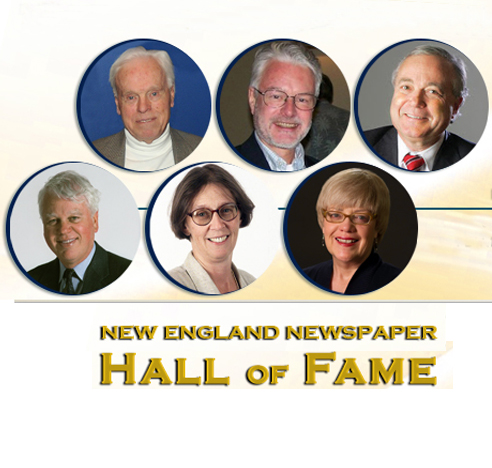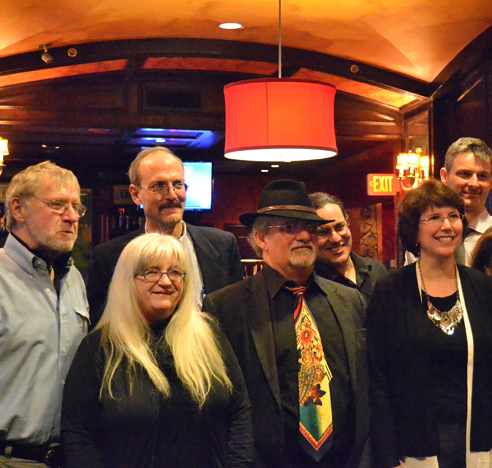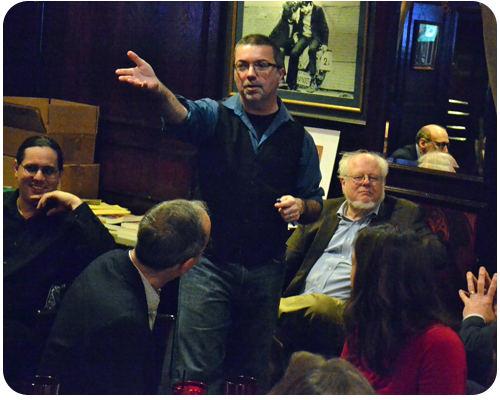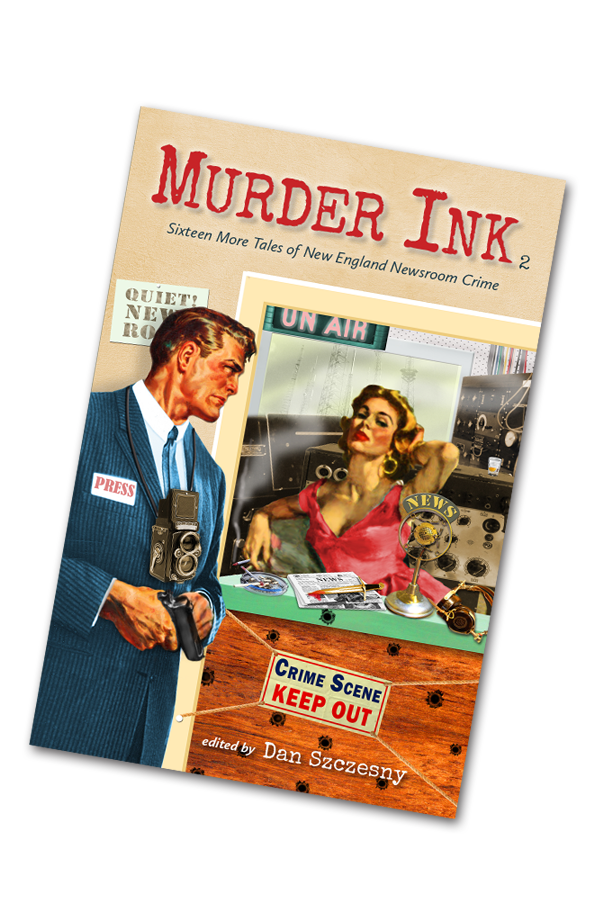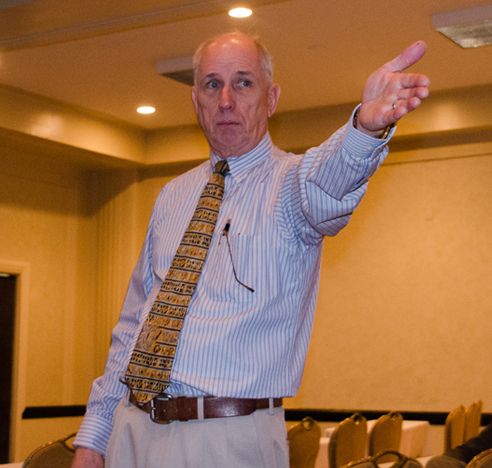Roswell S. Bosworth Jr.
Roswell S. Bosworth Jr., owner and publisher for 25 years of East Bay Newspapers of Bristol, R.I., died Feb. 7 while travelling abroad. He was 90 and lived in Bristol.
Bosworth’s father was editor and publisher of the Bristol Phoenix from 1928 to 1974.
Bosworth Jr. began his career in 1949, carrying out various assignments for East Bay Newspapers, parent company of the Phoenix. When his father retired, Bosworth took the helm of the family business, and expanded it by founding the Barrington Times in 1958, the Warren Times in 1961, the Sakonnet Times of Portsmouth in 1967, and, in 1985, East Bay Classifieds, all in Rhode Island. He also established a Portuguese language page, a staple of his newspapers for more than 25 years.
He was one of the founders of the then-New England Press Association and Suburban Newspapers of America, and was president of each organization.
Bosworth received many honors and awards. After he retired in 1999, he was inducted into the Hall of Fame of both the New England Press Association, now merged into the New England Newspaper and Press Association, and of the Rhode Island Press Association. In 1991, he received the Dean Lesher Award from Suburban Newspapers of America for his contributions to the industry. He was honored with the Horace Greeley Award by the New England Press Association in 1998, which recognized his “excellence, dedication, courage and excellence in serving the public interest.”
In 1969, he was chairman of the commission that created the Bristol Town Charter, which was later adopted by the voters and is still in use. He also was a member of the commission that arranged the purchase of land used to create the Bristol Town Beach and sports complex. He was chairman of the Bristol Harbor Development Commission.
He leaves his wife, Marcia; two children, Peter and Barbara; two stepsons, Matthew and Jonathan; eight grandchildren; a great-grandchild; a sister.
H. C. ‘Cal’ Thornton
H.C. “Cal” Thornton, a longtime news industry executive, died Feb. 11 in Charlton Memorial Hospital in Fall River, Mass., after being treated for coronary disease. He was 91, and lived in Westport, Mass.
Thornton began his career in the 1950s as a reporter for the then-United Press.
He later was regional sales executive in Minneapolis for what became United Press International after United Press bought the Hearst company’s International News Service in 1958.
He later went with United Press International to Boston, where he was manager for several years of its Northeast Division, covering New England and New York. He then was manager in Chicago of the Central Division, overseeing the Midwest.
In 1971, he was promoted to UPI’s vice president of sales.
He was named sales director for the former Los Angeles Times-Washington Post News Service in 1977, and 10 months later rose to general manager. He later was promoted to president and editorial director. He extended the news service’s influence across Asia and Europe and in the United States.
Thornton retired from the news service in 1988.
In Thornton’s obituary published in The Washington Post, Bill Ketter, a colleague at UPI in Chicago and New York City, remembered Thornton’s “ineffable knack for spotting unrecognized talent and bringing it to full fruition. He was the type of mentor and coach young journalists yearn for — knowledgeable, caring and collaborative.”
Ketter said Thornton played a role in Ketter’s being named a division manager for UPI in Boston, and then making him vice president of broadcast services in New York. Ketter is now senior vice president for news for Montgomery, Ala.-based Community Newspaper Holdings Inc., which owns 120 newspapers in 23 states, including The Eagle-Tribune of North Andover, Mass., and its sister newspapers in Massachusetts and New Hampshire.
Thornton leaves his wife, Sally; four daughters, Mary, Amy, Jennifer and Kathleen; a son, Peter; nine grandchildren; two great-great-grandchildren; his former wife, Audrey.
Robert James McCullough
Robert James McCullough, 88, of Stamford, Conn., died Feb. 3 at the Ludlowe Rehabilitation Center in Fairfield, Conn.
McCullough was general manager at The Advocate of Stamford, Conn., and Greenwich (Conn.) Time.
He also was general manager at radio station WSTC-AM and WYRS-FM in Stamford.
McCullough leaves his wife, Mary; eight children, Robert, Edmund, Susan, Marianne, William, Jack, Cathi and Maggi; 19 grandchildren.
Frank P. Creane
Frank P. Creane, 78, of Guilford, Conn., died Feb. 4 at The Connecticut Hospice in Branford.
Creane was a reporter for 10 years for The Enterprise of Brockton, Mass.; editor of the Wareham (Mass.) Courier; and a staff writer at the Old Colony Memorial of Plymouth, Mass.
He also had been a publications editor and public information representative for Boston Edison Nuclear Power Station in Plymouth for seven years.
He leaves his wife, Rita Ellen; three children, Kyle, Deirdre and Brett; five grandchildren.
Malcolm Lathrop Johnson
Malcolm Lathrop Johnson, 79, died Feb. 8 at Yale-New Haven (Conn.) Hospital.
His career-long tenure at The Hartford (Conn.) Courant included jobs as an international and national reporter, city editor, Sunday editor, film and theater critic, and editor of the poetry column, Our Singing World.
Johnson also wrote for The Boston Globe and other publications, and published a book, “Yesterday’s Connecticut.”
He leaves three sons, Mark, David and Malcolm Jr., and four daughters, Martha, Cassandra, Angela and Amanda.
Bernard S. Redmont
Bernard S. Redmont, 98, a former longtime resident of Brookline, Mass., died Jan. 23 at Orchard Cove retirement community in Canton, Mass., where he was living.
Redmont had been a veteran foreign correspondent and was dean of Boston University’s College of Communications from 1982 until 1986.
Before coming to Boston University, Redmont had been a foreign correspondent in times of both war and peace. He traveled to 55 countries as a correspondent or news executive.
While at Columbia University for a master’s degree, Redmont received the Pulitzer Traveling Fellowship, allowing him to travel to Mexico and Europe to report before World War II.
When World War II began, Redmont joined the Marine Corps and was a combat correspondent. He was injured in the war and received a Purple Heart. His injuries did not stop him from reporting overseas, as bureau chief in Buenos Aires and Paris for World Report, which later became US News & World Report.
He then was employed at Agence France-Presse, was a radio correspondent for Canadian Broadcasting Co., a correspondent for Westinghouse Broadcasting, and a broadcaster for CBS News in Moscow and Paris.
Redmont had been blacklisted during the McCarthy era after he refused to name a friend as a communist.
He resigned as dean at BU after a dispute with then-BU President John Silber over a controversial program to train Afghan journalists in Pakistan.
Redmont’s reporting helped lead to the Paris peace talks, which ended the Vietnam War. For that work, he was recognized by the Overseas Press Club of America in 1969.
Redmont leaves two children, Dennis and Jane; three grandchildren, Michael, Isabel and Rodrigo; four great-grandchildren.
Gary A. Ouellette
Gary A. Ouellette, 65, of Plymouth, Mass., died Feb. 19 at the McCarthy Care Center in Sandwich, Mass.
Ouellette was an account executive and sales manager for 17 years at the former Plymouth-based MPG Newspapers, whose flagship newspaper was the Old Colony Memorial of Plymouth.
He leaves his wife, Donna; a son, Gary Jr.; three grandchildren.
Theodore A. LaBorde
Theodore A. LaBorde, 68, of Easthampton, Mass., died Feb. 5 at Baystate Medical Center in Springfield, Mass.
LaBorde began his career as a reporter for The Hartford (Conn.) Courant. He later joined The Republican of Springfield, Mass., where he was employed for 38 years. After retiring in 2012, LaBorde continued to write for MassLive.com, the Republican’s website, as a special reporter.
He leaves his wife, Linda; three children, Ted, Michelle and Megan; five grandchildren; two brothers.
Robert J. Leddy
Robert J. Leddy, who was born in 1945 and lived in Providence, R.I., died Feb. 4 at his home.
Leddy spent most of his career with The Providence Journal. He began there as a part time wire room and copy editor assistant. He later was brought on full time as a sportswriter.
He was known for covering high school sports, particularly track and field. He retired from the Journal in 2001, but continued to be a correspondent for the Rhode Island Track and Field Foundation. He was recognized for his work by being inducted into the Rhode Island Interscholastic League Hall of Fame in 2016.
Leddy wrote many columns on movie actors and directors for the Journal’s editorial pages.
He leaves three sons, Cyrus, Paul and Christian, and his ex-wife, Judy Ellinwood.
George W. Smith
George W. Smith, 76, of West Hartford, Conn., died Feb. 9 at the Hebrew Home in West Hartford after battling Lewy body dementia and Parkinson’s disease
Smith was a sportswriter at The Hartford (Conn.) Courant for more than 25 years. He traveled with the then-Hartford Whalers hockey team and covered boxing, among other sports. He wrote a popular weekly column, Looking Back.
He also had been employed for a year at the Record-Journal of Meriden, Conn.
After his retirement in 1995, Smith became a boxing judge and was one of the founders of the Connecticut Boxing Hall of Fame, and was honored in 2013 for his contributions to boxing. He authored four military history books, “The Siege at Hue” in 1999, “Carlson’s Raid” in 2000, “The Do-or-Die Men” in 2003, and “MacArthur’s Escape” in 2005..
Smith leaves his wife, Mary Ellen; a daughter, Anna; three grandsons, Henry, Owen and Brendan; four siblings, Jim, Leslie, Lynne and Kathy.
John T. Cunniff
John T. Cunniff, 87, of New York, died Jan. 20 in a nursing home in Valley Cottage, N.Y.
Cunniff was a business writer for The Associated Press. He wrote the Business Mirror column from 1966 until his retirement in December 2001. He wrote nearly 5,600 columns and business analysis pieces. At the column’s peak, hundreds of newspapers published Business Mirror.
He began his journalism career at the AP’s Boston bureau and was employed in the Memphis bureau before moving to the business news department at AP headquarters in New York City. He won the John Hancock Award, two times each as an individual and as a member of AP teams; the Polk Award for National Reporting for covering racial matters in the South; a Distinguished Achievement Award from the Society of American Business Editors and Writers; first prize in the syndicate category of the Media Award in Journalism from Dartmouth University. He was a Poynter Fellow in Journalism at Yale University.
He wrote a book, “Live Within Your Income.”
Stories of his ran in Parade, Reader’s Digest and other magazines. He wrote an annual summary of the U.S. economy for the Encyclopedia Americana Yearbook for 23 years. Cunniff continued writing, in the fiction genre, after he retired.
He leaves several loved ones.
Raymond Saidel
Raymond Saidel, 92, of Manchester, N.H., died Feb. 13 at his home.
In the 1970s, Saidel was a foreign correspondent for the New Hampshire Union Leader of Manchester. He travelled across the Middle East to cover Arab-Israeli conflicts, such as the Yom Kippur War of 1973. He also was an embedded journalist with the Southern Lebanese Army of Maj. Saad Hadad.
He leaves his wife, Simone; two daughters, Joanna and Michelle; three sons, Marc, Benjamin and Alex; seven grandchildren.
John Frederick Watters
John Frederick Watters, 64, of Barnstable Village, Mass., died Feb. 17 in Cape Cod Hospital in Hyannis, Mass.
His was a reporter for The Register of Yarmouth, Mass., and wrote a column, The Watters Edge, for the Barnstable Patriot.
He leaves a son, John; his former wife, Kathleen; two nieces; two nephews.
Michael O’Traynor
Michael O’Traynor, formerly of Littleton, N.H., died Feb. 8 in his home.
He wrote a column, Under the Mountain, for the New Hampshire Sunday News of Manchester, and authored a biography of Maynard Sundman, founder of Littleton Coin & Stamp.
O’Traynor also had been a television host in Ottawa, Canada, for the “Reach for the Top” quiz show and a show titled “Tales from the Ottawa Valley.” O’Traynor also wrote a weekly newspaper column.
O’Traynor leaves his wife, Alice; his father, Richmond; seven children, Kathleen, Aidan, Beth, Sean, Tom, Brennan and Colleen; 15 grandchildren; two sisters.
Mary Pat (Kelleher) Furlani
Mary Pat (Kelleher) Furlani, 78, of Holyoke, Mass., died Feb. 3 at Holyoke HealthCare Center.
Furlani was employed with the company that now publishes The Republican of Springfield, Mass. and with The Wall Street Journal.
She leaves a son, Bobby; a daughter, Kathy; two grandchildren, Jeffrey and Katie.
Sheila Mary Mackinnon
Sheila Mary Mackinnon, 85, of Hardwick, Mass., died Feb. 3 at her home after a lengthy battle with pulmonary fibrosis.
Sheila contributed to numerous local newspapers and travel magazines while living in Sudbury, Mass.
She leaves her husband, Norman; two sons, Neil and Craig; a daughter, Celia; seven grandchildren; a great-grandchild.
The obituaries were written, at least in part, from published reports by Bulletin correspondents Ashleane Alabre, Sophie Cannon, Joseph Dussault, Nico Hall, Bailey Knecht, Joshua Leaston, Peyton Luxford, Michael Mattson, Eloni Porcher, Mohammed Razzaque and Thomas Ward, undergraduate students at Northeastern University.









